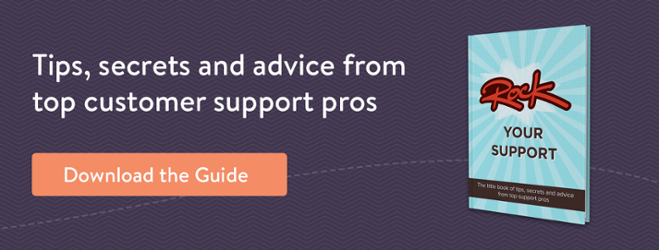Identifying the service our customers want can be like trying to hit a clay-pigeon. We want to do our best to deliver the best support to our customers. But your customer and their desires can be moving targets.
Outside forces such as interactions with other businesses and feedback from friends and family influence the service we expect to receive. Over time, they develop expectations about your brand and service standards.
If you want to keep your customers happy and coming back to you, again and again, you’ve got to meet and exceed these expectations over your most dominant support channels—email, social and Messenger (previously, live chat).
Customer needs and customer expectations are the two most confused aspects of customer service
The two terms are used interchangeably to describe what the customer wants, but they differ.
If you want to change how you give customer support, you have to understand the difference between needs and expectations.
Needs describe what customers want—at a minimum—from a product, service or interaction with support staff. For example:
- If a customer is trying to accomplish a task using your software, but your software can’t perform that task, the customer needs this missing function.
- If you sent a product to a customer and it arrived broken, the need is a new product.
- If customers use your products 24 hours, 7 days a week, and they call your support hotline in the middle of the night when no one is working, they need 24-hour support.
Needs typically have solutions – (whether the solutions are realistic is another matter).
Customer expectations, on the other hand, describes how customers feel their interactions with your your company, products, and support should be.
Understand how touchpoints affect your relationship with your customer
Expectations are preconceived notions based on interactions with your brand through advertising and marketing, past experiences, opinions from family and friends, online reviews, and costs. For example:
- If you sell cheaply made products at low prices, your customers will automatically set a low bar for customer service. They go into calls with customer support staff anticipating they’ll have to be aggressive to get what they want.
- If your products are expensive, customers will expect premium support. They will set the bar very high, figuring you will replace products with no questions asked, or go out of your way to address their needs.
- If every software on the market has a specific feature except yours, potential customers will believe your product is less valuable and should be priced lower than the competition. Again, this sets lower expectations.
Basic customer expectations are formed by your product
Customers will have differing expectations for each company. You will expect better service for a $50,000 car versus a $10,000 car.
Certain customer expectations apply to most people:
- Customers expect prompt responses to questions, on the phone, via email, social or through messaging.
- Customers expect companies to deliver on promises.
- Customers expect a basic level of service. If it’s broken, they want it fixed the first time. If they have a question, they want an answer.
- Customers expect to be treated with respect and fairness. All customers are equal.
- Customers expect to contact companies to give feedback.
- Customers expect flexibility in extenuating circumstances.
When you meet these minimum expectations—and any other expectations you’ve discovered by surveying and studying your customers—you deliver on your customer service promises and keep your customers (fairly) satisfied.
Why exceeding customer expectations is important
Look how as a subscription business becomes larger, more and more customer bookings are needed to replace monthly recurring revenue lost through churn.
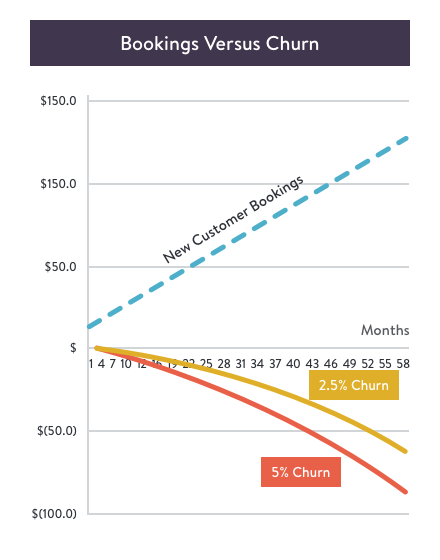
Companies that exceed expectations have lower rates of churn (or attrition) and steadier growth rates. It makes great business sense.
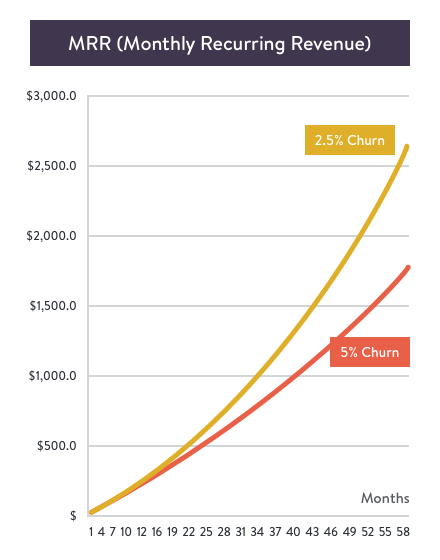
Businesses must go a step or two further to exceed customer expectations. They must constantly work at retaining customers and adopting customer-first organizational values. If they succeed, they turn customers into loyal brand advocates.
Great support can be the strongest foot you put forward
Let’s take an industry most of us are familiar with: the airline industry.
To understand how you can exceed customer expectations and win new customers through amazing customer service, let’s look at British Airways and Virgin Atlantic.
British Airways has been around longer than Virgin Atlantic, so one of the ways Virgin has set itself apart in airline market was by making its customer service a competitive advantage for the business.
How does Virgin Atlantic exceed customer expectations to win new customers?
Virgin Atlantic arrived on the airline market making customer service part of its business strategy. In 1984, when the company was founded, the phrase “customer-first service” wasn’t being used in anyone’s mission statements.
While other airlines focused on getting people from point A to point B, Virgin focused on “moments of truth” to enhance the Virgin experience. They added free in-flight entertainment behind each seat and free chauffeurs for business class customers. It has since added Wi-Fi and speedy check-in processes, while keeping the service on board fun and lighthearted. It has been awarded four stars out of five from SkyTrax for customer service.
In going beyond what airline customers expected, Virgin gained valuable, loyal converts and changed the game for how the industry does business.
How does British Airways exceed customer expectations to win new customers?
Virgin Airways and British Airways compete for many of the same customers. But British Airways distinguished itself by exceeding expectations in business and first class.
BA was among the first airlines to add lie-flat seats and lounges with free showers, ironing, and food. These services upped the game and set a new standard.
Now that the carrier has made cuts to on-board meals and free bags, this signals it may be falling short of expectations.
How to meet customer expectations on email, social, and Messenger
So how do you start to exceed expectations? You can start by making changes across your three dominant support channels.
Making Email support a source of happiness:
An easy way to make a good impression over email is to respond quickly. 43% of consumers expect an email reply from a company support team within one day. If you can respond in that time—or faster!—you’ll be ahead of most.
We love using frequently given responses and macros to cut down on response times for common questions. But take a cue from Paul, a customer service rep at Zappos, whose email to a customer with damaged shoes was full of personality.
He didn’t just tell the customer he was issuing a full refund, he made the customer laugh. And not only was he giving a refund, he sent the customer a $15 coupon: exceeding expectations not once, but twice.
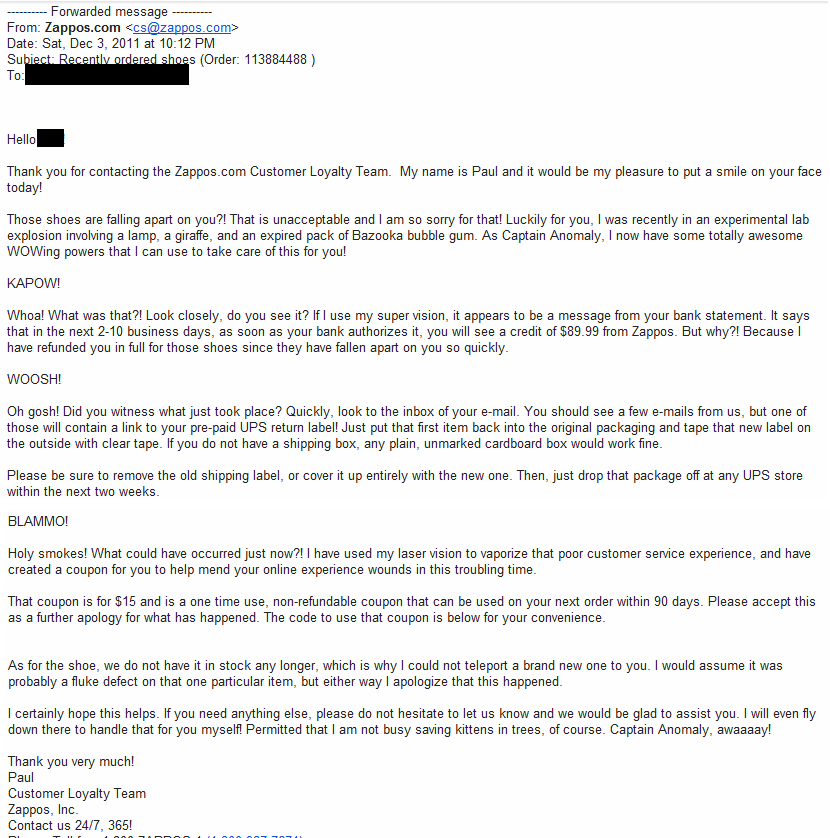
While fun, lighthearted email responses may not fit with your brand, the takeaway is to be as personal and authentic as possible so your customers feel like individuals—not case numbers.
Social media can be a great way to show understanding:
Like email, customers who take to social media for support expect speedy responses (with 42% waning to hear back from you within the hour).
Support reps working on social media channels can also wow customers here by being more personal. Take JetBlue for example.
When a customer tweeted the company saying his TV wasn’t working, the company quickly responded to ask if the whole plane’s TVs were out, or just his?
My View during all the flight (4hours). No movies, no TV. First complain to one of my favorite airline. @JetBlue 🙁 pic.twitter.com/Cipl9Pjiy6
— Esaí Vélez (@EvpLares14) November 26, 2015
When he confirmed that only he had a black TV, they tweeted: “We always hate it when that happens. Send us a DM with your confirmation code to get you a credit for the non-working TV.”
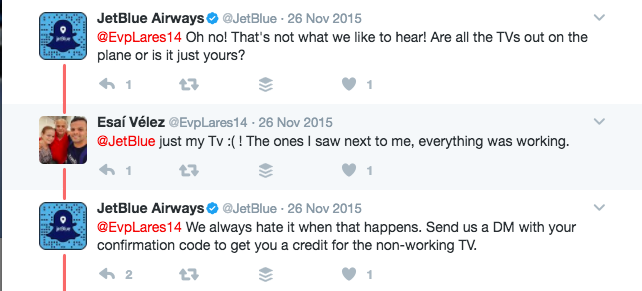
JetBlue’s support rep showed empathy and surprised the customer with a credit—all within only 23 minutes.
Treat your customer like a friend with easy back and forth in live chat:
As messaging is done in real time when you use customer service software, customers aren’t waiting for a response for a day. (Or, at least, they shouldn’t wait that long, if you’re monitoring how long it takes customers to get connected with reps on chat).
Many customers have low expectations for chat, figuring they’re going to have a robotic conversation with an unseen person on the other end.
This presents a great opportunity to do the opposite. Keep your chat conversations conversational, as Daniel Harris, a customer support advocate at Kayako does here.
Daniel handled a tricky case here. He explained in a human way the limitations of the support he could give, but Daniel managed to help him find a solution to performing these specific custom code customizations by directing the customer to a place where he could interact with peers and solve a solution.
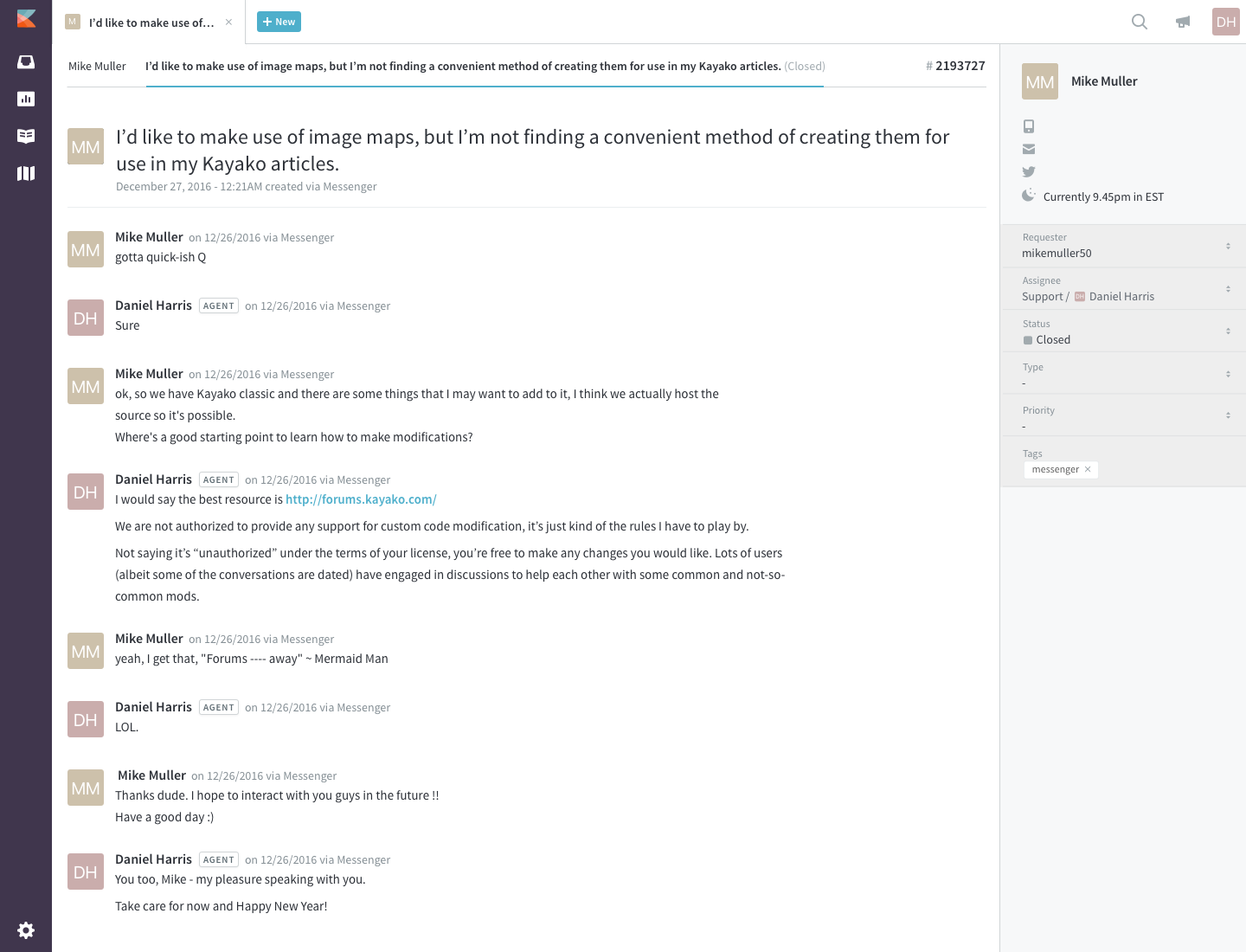
Customer experiences matter
We’re living in an age when customers are more empowered and have more choice than ever about where they spend their money. Delivering great service is non-negotiable.
Be it via email, messaging or social media, to meet and exceed customer expectations, empathy to customer pains and prompt, customized solutions are essential.
Customer service has always mattered. But now that the power has shifted to the consumer, it matters a great deal more. Companies must go beyond providing a service or product to focusing on customer experiences.
